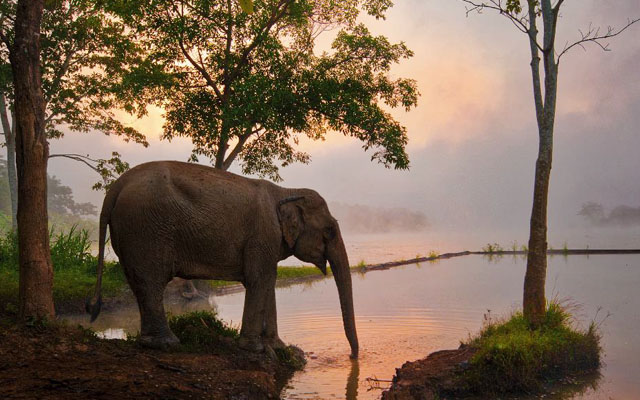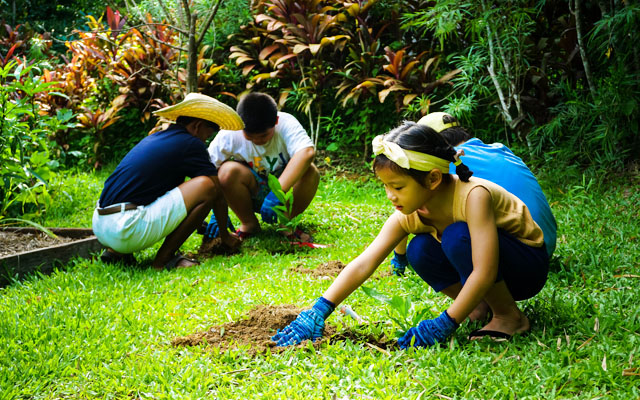The strive for a smarter, more sustainable way of travelling has arose amid the pandemic, and tourism players in Asia-Pacific are taking action to go the extra green mile.
Move over, sustainable travel. The pandemic has birthed a call for a model of tourism that builds back better by going one step further than the motto of reaching net-zero. Regenerative tourism, the latest buzzword to enter the green scene, calls for a paradigm shift long overdue. Seen as a leap forward from simply developing tourism sustainably, regenerative tourism encourages travellers to leave a place better than they found it.
“Regenerative tourism gives back more than it takes. It should create measurable beneficial impacts for local community and ecosystems,” explained Jeffery Smith, vice president of sustainability for Six Senses Hotels Resorts Spa.

“The goal of sustainability is to minimise negative impacts in these areas to the point where that business is able to survive. Regenerative tourism seeks to maximise the positive impacts; it should thrive.”
As tourism slowly emerges from the shackles of Covid-19, more stakeholders are sounding the call for the industry to build back better. Last June, six NGOs including the Centre for Responsible Travel and Sustainable Travel International united as the Future of Tourism Coalition with the goal of placing destination needs at the centre of tourism’s new future.
Twenty-two industry stakeholders, including tour operators like G Adventures and The Travel Corporation, NTOs such as the Jordan Tourism Board, and NGOs like the World Wildlife Fund, have committed to the coalition’s 13 guiding principles. These include choosing quality over quantity, demanding fair income distribution, mitigating climate impacts, closing the loop on resources, and operating business responsibly.
Booking agency Regenerative Travel released a white paper in December 2020 exploring how travel and hospitality stakeholders can employ regenerative principles to benefit both their surrounding areas and the local communities, without causing further damage. Included are case studies from hotels like Six Senses and Gal Oya Lodge in Sri Lanka which may have been practicing regeneration, without explicitly using that terminology.
Five regenerative principles are detailed in the paper, including whole systems thinking which considers all stakeholders in every decision, as well as the ripple effect those choices have on both animate and inanimate systems; honouring sense of place which entails adopting a holistic understanding of places; as well as community inclusion and partnership.

Ramping up the regeneration focus
Some Asia-Pacific tourism stakeholders, long focused on a regenerative model, are making strides in progressing such efforts.
One such player is Asian Trails, which has always held regeneration close to its heart, but had tagged such actions as “responsible tourism” and “sustainable tourism”, shared its group sustainability coordinator, Ameer Virani.
“The move towards talking about regeneration came as a result of the launch of the regenerative travel movement in mid-2020 and growing awareness of the term and what it means. This helps us communicate more accurately what we are trying to do,” he added.
With a greater focus on regeneration, in July 2020, Asian Trails embarked on a rigorous evaluation process of all its day excursions, multi-day tours and animal experiences to identify its most responsible products, shared Virani.
Among other criteria, its evaluation guidelines consider direct support to small and social businesses, eco-friendly accommodation and transport, supporting community-based tourism, and financial or in-kind contributions to social or environmental causes.
Virani said these guidelines will also help its staff develop more regenerative products in future. “Our process is, of course, not an exact science but we really want to highlight those products that we believe have net positive outcomes on local people and places,” he added.
As well, the company launched a refillable water bottle initiative in early 2020, which has yet to be fully implemented due to the pandemic.
Virani explained that with the initiative, beyond the aim of reducing the use of single-use plastic bottles – an instance of sustainability – the company intends to also regenerate by donating US$1 from the sale of each refillable water bottle to a local drinking water or plastic reduction project to ensure wider community and environmental benefits.
Another DMC that also leveraged the pandemic pause to rethink its priorities is Discova. “We needed to reflect on the impact tourism has on our communities and the environment. This has allowed us to take things one step further than a mere sustainable tourism model, focusing instead on a regenerative model,” said Eileen Yee, regional general manager – Cambodia, Japan, Myanmar, Singapore and Education Travel, Discova.
In line with that new vision, Discova has undertaken a reforestation programme in Siem Reap to help regenerate the local environment, and started working with communities in Bali to grow organic vegetables, diversifying their crops in a mutually beneficial way.
Going down the regenerative route too is Six Senses, which has committed funding outside hotel operations designed to give back at the local level, on projects with clear objectives for local communities and ecosystems, shared Smith.
For instance, the group has installed free filters for local communities at Six Senses Yao Noi in Thailand, providing more than 105,000 people with access to clean drinking water.
Six Senses involves guests in its regenerative programming, said Smith. Since 2019, guests at Six Senses Con Dao in Vietnam has helped release endangered sea turtle hatchlings out to sea on the resort’s very own beach, via partnership with the national park.
As well, all Six Senses have an Earth Lab dedicated to schooling guests on its sustainability efforts through free workshops to learn tips like plastic reduction at home, crafty upcycling, and gardening. Guests also enjoy complimentary visits with community partner organisations and scientists to learn about regeneration projects outside the hotel.
Last August, Six Senses Yao Noi launched the Junior Eco Warrior programme for young guests to contribute in the preservation and regeneration of the island’s flora and fauna. Ways they can do so include sowing seeds, picking trash on the beach and DIY-ing them into treasure, as well as building nests from recycled timber for the resort’s resident hornbills.
A regenerative recovery
A post-vaccine return to travel has been predicted to be one that is greener and less crowded, driven by a new breed of more socially conscious travellers. Tourism stakeholders who invest in regenerative principles, therefore, are projected to gain favour with travellers who will be searching for more meaningful and purpose-driven experiences.
“The pandemic has led many to rethink, reflect on life, and contemplate the impact that we have on the things around us. This may mean that travellers will want to derive more from a holiday than just lazing on the beach and having fun,” said Yee.
“Thus, we believe purpose-driven experiences will gain a broader audience and become a bigger market for us – and regenerative tourism will be a way to satisfy this market.”
Having always placed sustainability at its core agenda, Discova intends to build on that firm foundation to further its green credentials. “Post-Covid, we will make available tour products that offer travellers more than just sightseeing, with rewarding experiences that give back to the communities, help the communities to grow, and hopefully, serve to regenerate their homes,” said Yee.
As tourism players ready for the rebound, Smith warned that those who lag behind the regenerative curve may ultimately find themselves on the losing end.
“Those (businesses) which do not responsibly mitigate negative impacts risk falling behind, and especially if – or when – the shift comes from inbound operators and OTAs. Similar to the abrupt shift we saw with elephant tourism in Thailand, some businesses may suddenly be left in the cold,” he said.
“The benefits for tourism players that shift to a regenerative model include reduced risk in the marketplace as well as increased support from local stakeholders and more reliable supply chains.”
Regenerative travel is a long-term endeavour, and once established, should reduce strategic risks, added Smith. “It is much easier to open a business that ignores externalities like public health or wildlife habitat, however, once those are eroded, that business will struggle to survive,” he said. “Going beyond risks, regenerative travel adds value to any tourism product through the fantastic authentic experiences it creates.”
As to how more tourism businesses can be encouraged to adopt regenerative practices, Virani said: “Consumers will be able to drive the regenerative travel trend, along with local governments who will hopefully play a more active and effective role in destination management in the future. A limited number of businesses will set the trend, but others will only follow if consumers and those managing destinations drive them in the right direction.”
He concluded: “Regenerative tourism is a no-brainer. It is in the best interests of our destinations and, as a result, our bottomline. Simply being sustainable is no longer good enough and never should have been considered that way.”




















